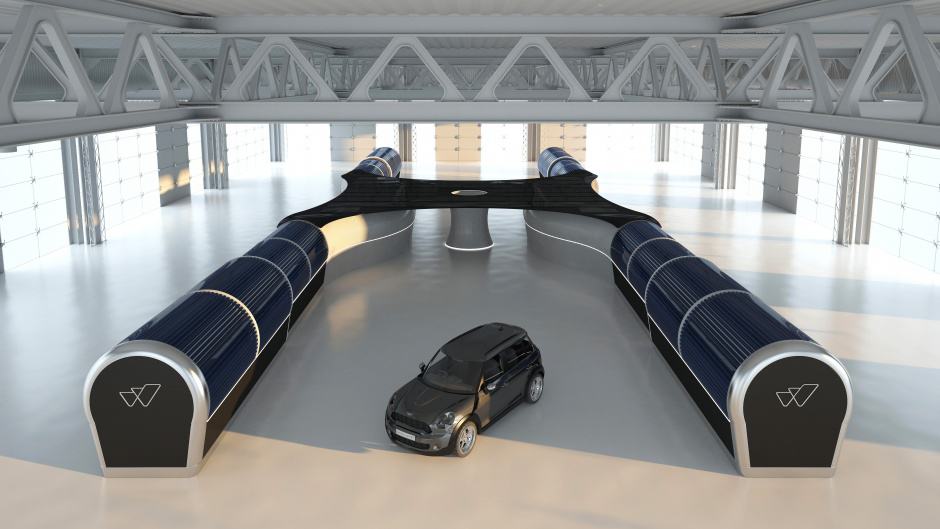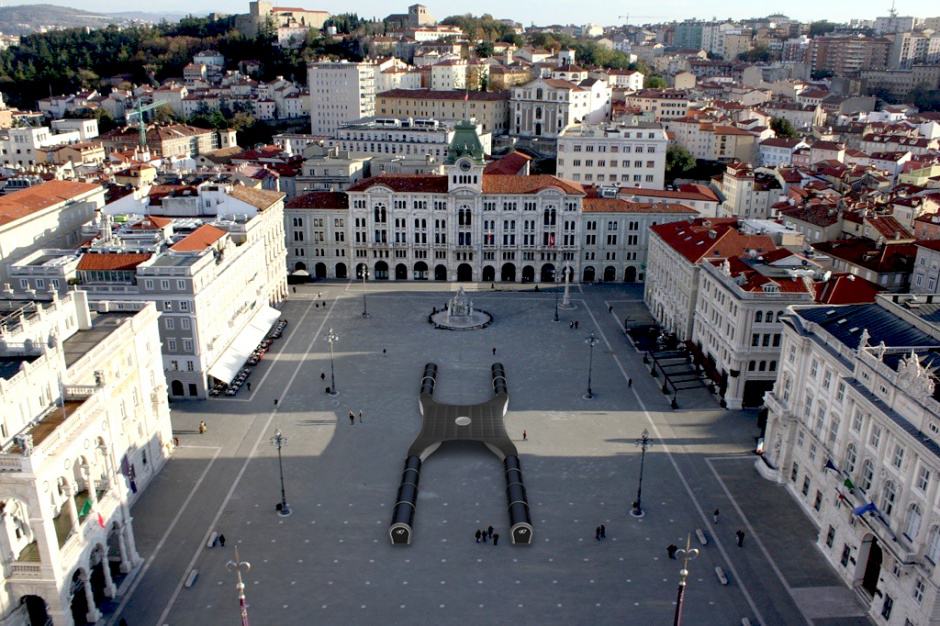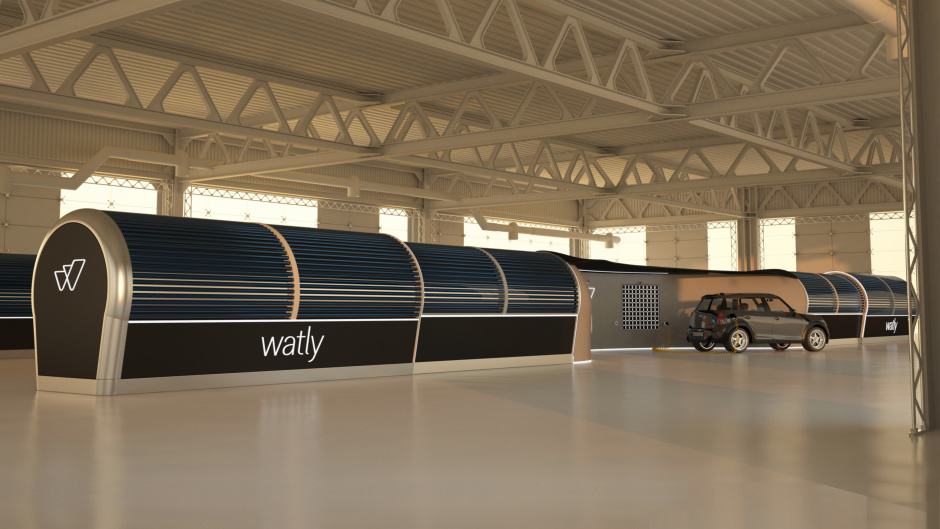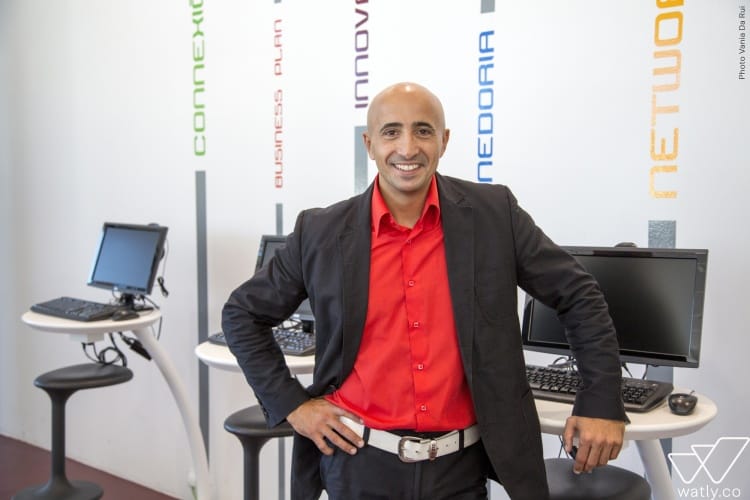
Clean water is universally recognised as an absolute necessity for human existence and a supply of electricity equally so for most societies. But increasingly, even in developing world environments, the same applies for the basics of information technology: computing, internet connectivity and mobile communications.
So three different problems requiring three different solutions?
Someone who put that question to themselves and decided the answer was 'no' is Marco Attisani, founder and CEO of Watly – a company which is developing a machine that it believes can satisfy all three of those requirements in a single integrated installation.
The machine eponymously called the Watly comprises a central array of solar panels connected to four wing units each of which houses a bank of vapour compression distillation tubes that can boil unsafe water from sources such as rivers and produce safe, clean water fit for human consumption.
But a crucial factor is that the energy used to drive that core water purification process is not the electricity generated by the panels. Instead, the process is driven by waste heat harvested from the panels by an air circulation system – an ingenious technique that Attisani describes as effectively self-powering. “It does not use any energy,” he confirmed.

In turn, this generates a number of associated benefits. These include optimisation of the solar panels - which are kept at their most effective operating temperature of 25°C irrespective of ambient conditions - and the delivery of all the generated electric power to support other more appropriate applications. These can vary from mobile phone recharging through 'cloud' connection to the internet to conventional electricity supply via an internal inverter that carries out DC-AC conversion.
How much power a full-size machine could generate would depend on several factors – not least the number of solar panels – though Attisani reckons that 150kWhr per day should be achievable. “We take two things from the sun – the heat and the light,” he said. “The heat purifies the water and the light generates electricity.”
At peak efficiency the system could purify 5,000 litres of water per day
It is a bold and ingenious concept and one that Attisani has been working towards for nearly four years. Indeed he can pinpoint precisely when he decided to embark on the project to develop the machine: 9 March 2013. Since then work has progressed through a couple of small scale prototypes, one of which was tested in the field in Ghana with the aid of a mix of private funding, a 'crowdsourcing' initiative and backing from public sources including two million Euros from the European Horizon 2020 initiative.
The company itself is quite distributed in its operations with design and marketing taking place in Spain, IT work in northern Italy and actual manufacturing in the southern Italian region of Apulia. Attisani, who is himself Italian, said that the Italian government is a particularly enthusiastic supporter of the project.
The output of purified water from a complete Watly 3.0 configuration operating at peak efficiency would, Attisani says, total “five thousand litres per day”.
Unsurprisingly given that volume, the machine is substantial; from one end to another it is 40m in length. Moreover, he also stresses, because the purification process itself is one of distillation it can deal with any type of contamination - bacterial, chemical or physical. “There are no circumstances in which the quality of the output water is dependent on the feed-in water,” he states emphatically.

In fact, Attisani adds, the water that results from the process is almost too pure since its mineral content is effectively zero. Therefore the machine provides the space for rocks to be packed in through which the water flows in a secondary filtration process so that it can be “remineralised” in a manner analogous to what occurs in nature. “We can add potassium and magnesium and alter the ph. levels, so in a way the machine is an artificial spring,” he said.
He also stressed that because the purification process itself does not utilise filters, it is effectively maintenance-free. Nevertheless, contaminants that have been removed from the water and then stored in the machine will need to be retrieved periodically, though that should be a very simple task. The same is true for the initial feed-in procedure for the water. The test machine used in Ghana simply had a pullout drawer into which water could be poured from a handheld container with the purified liquid then accessed from a tap.
Meanwhile, the on-board IT capabilities of the machine promise to go beyond simply supporting personal communications. Attisani said that each machine could have a wireless connectivity zone of perhaps a kilometre around it.

How that capability might be exploited is another matter but it might, for instance, enable specialist information available over the internet to be accessed for local purposes. An example he suggests is for a visiting doctor to check the symptoms of a patient against a database elsewhere.
Rather more spectacularly, though, Attisani revealed that Watly is currently working with the European Space Agency to create an application that would allow the machine to guide in a drone aircraft to deliver urgent supplies. Again medicine suggests itself as a likely cargo. Interestingly Attisani makes it plain that he does not regard these IT-based capabilities as add-ons to the water purification process but as integral elements of the whole concept. Indeed his own description of the machine is that it is a “thermodynamic computer”.
Given this wide range of potential capabilities, the cost of a complete 3.0 unit is also likely to be variable. Attisani suggested anything between 600,000-1m Euros per unit depending on the technologies built into it.
The unveiling of the first full-size machine is scheduled for May 2017 and the company currently has the capacity to produce 50 machines a year. Attisani expects to be able to deliver the first five units to customers before the end of this year (2017).




Viking Link connects UK and Danish grids
These underwater links must, based on experience with gas pipelines, be vulnerable to sabotage by hostile powers. Excessive dependency on them could...